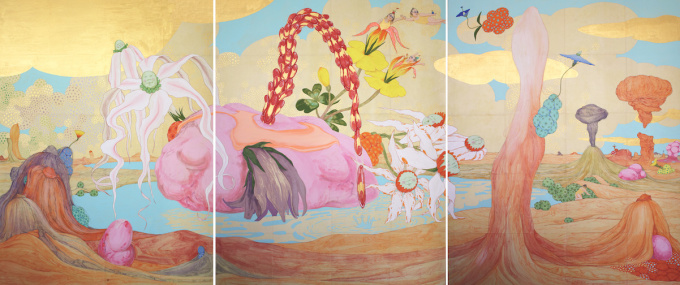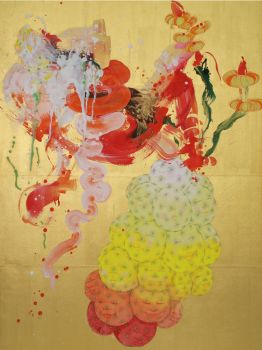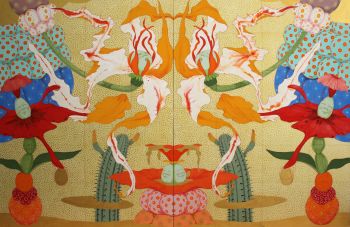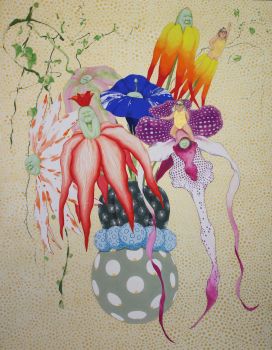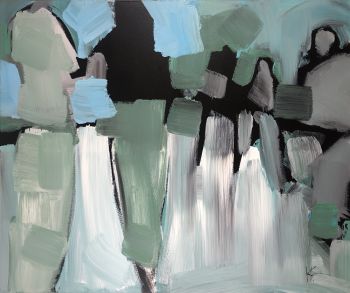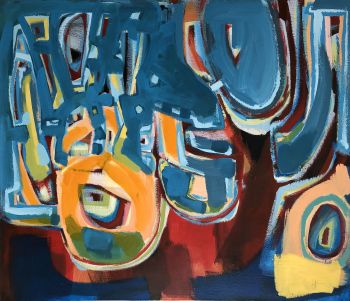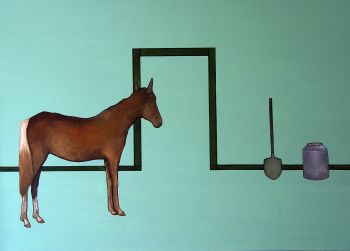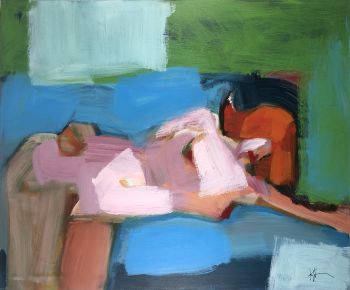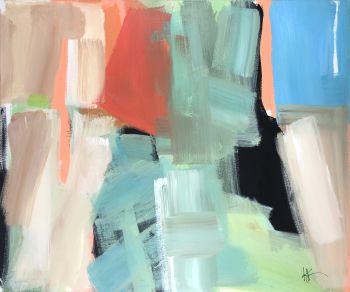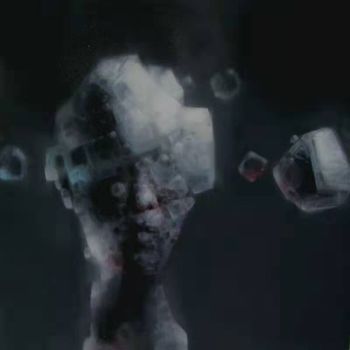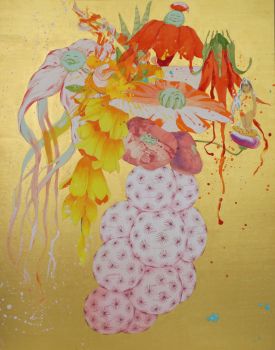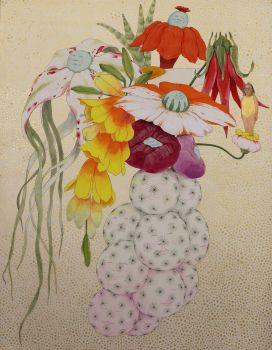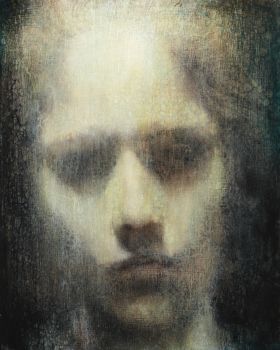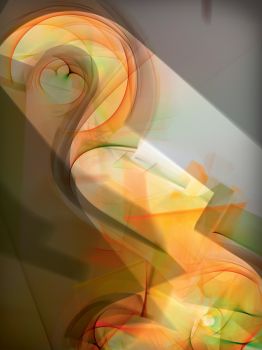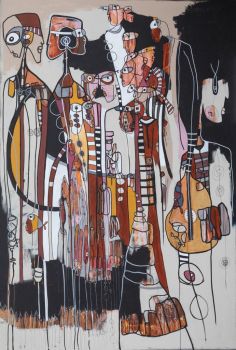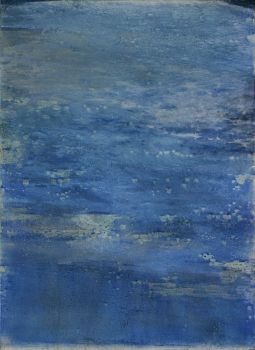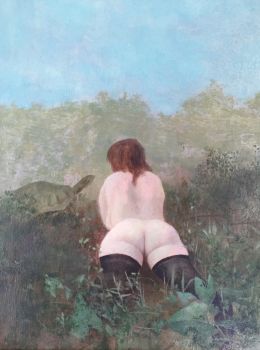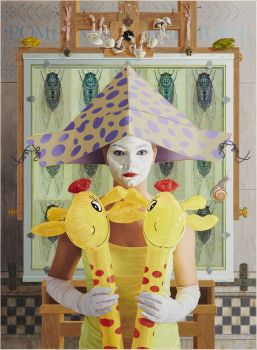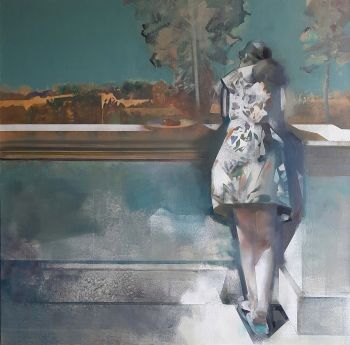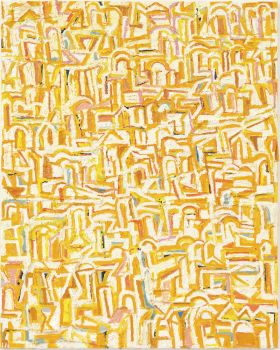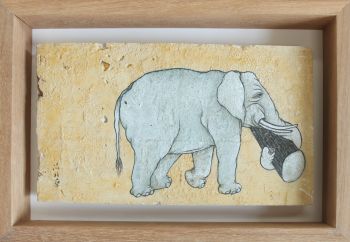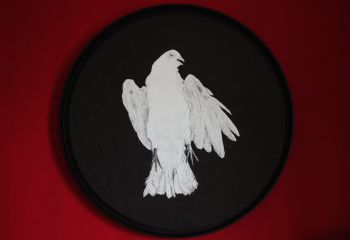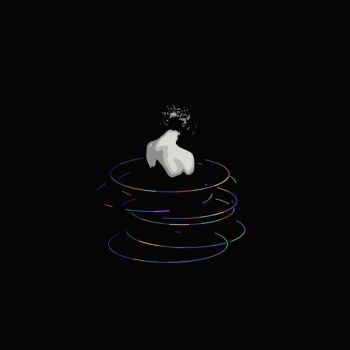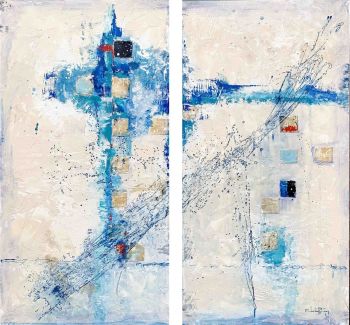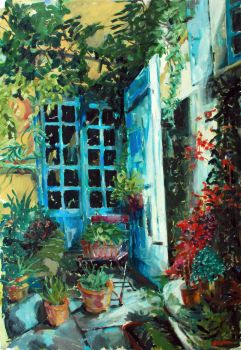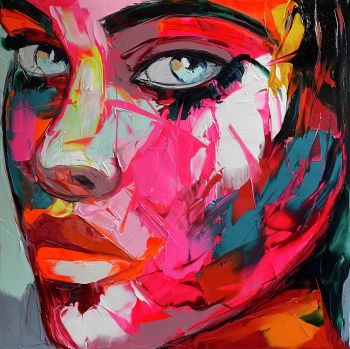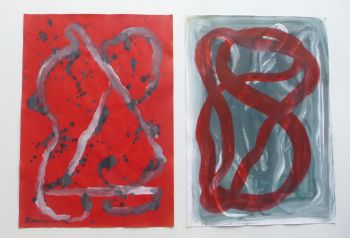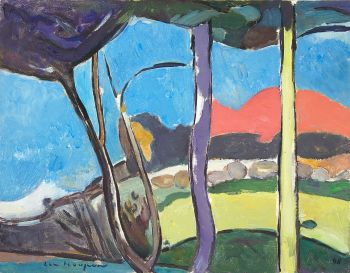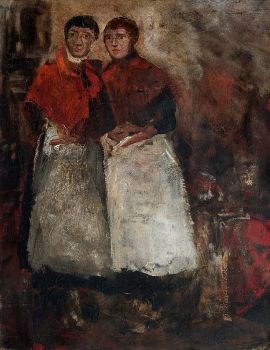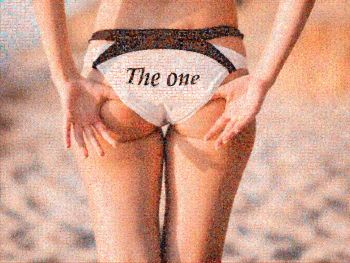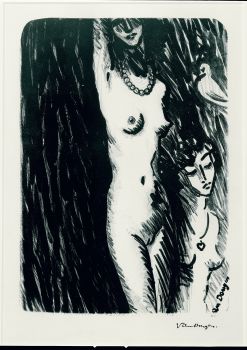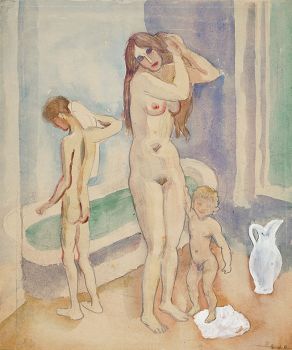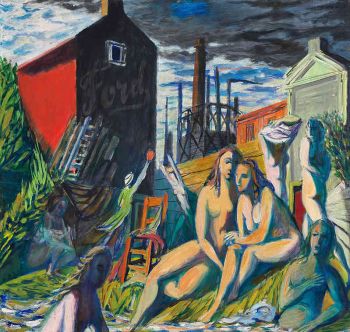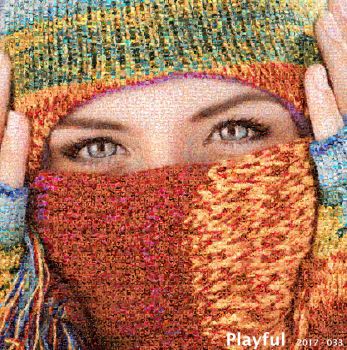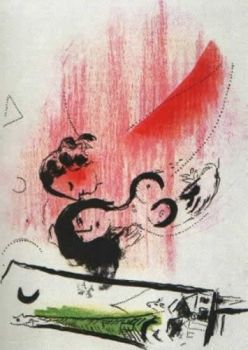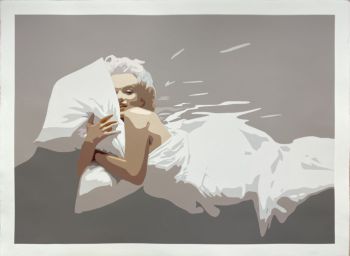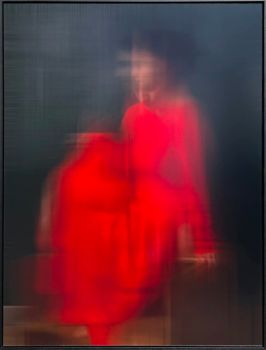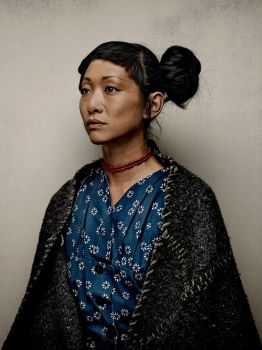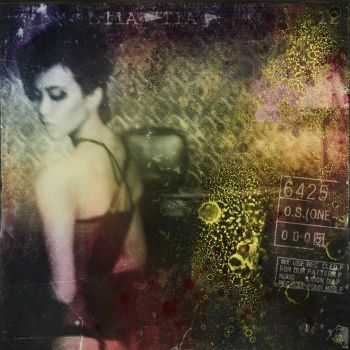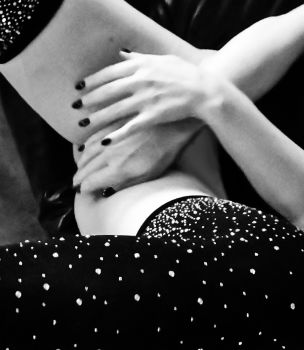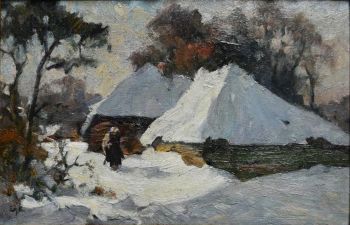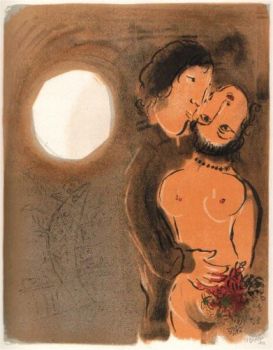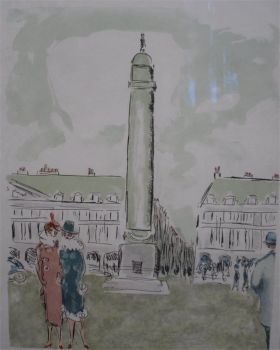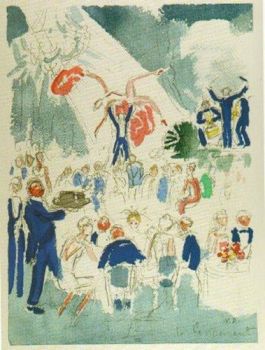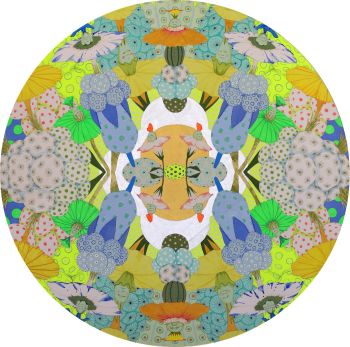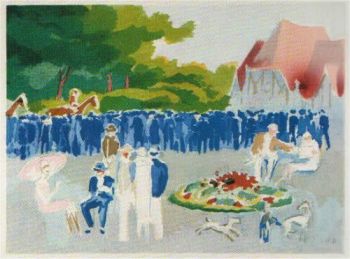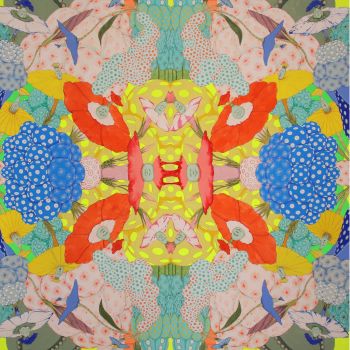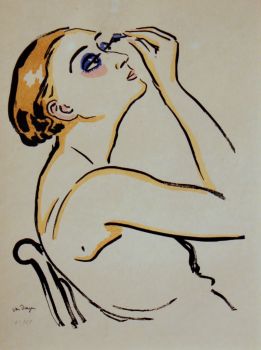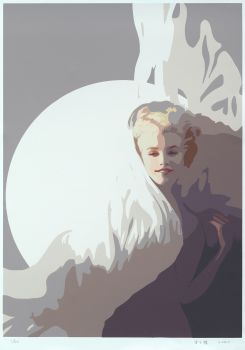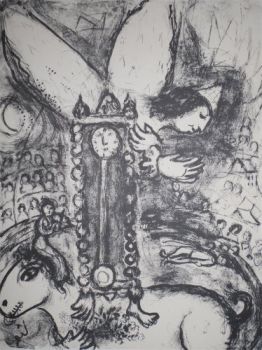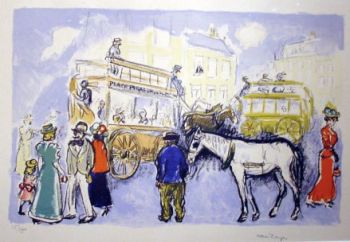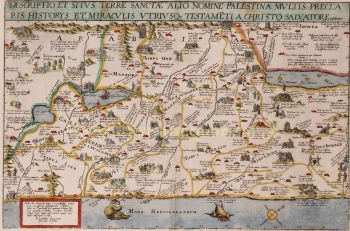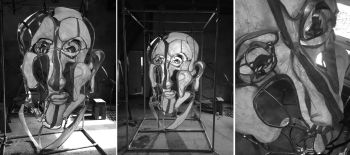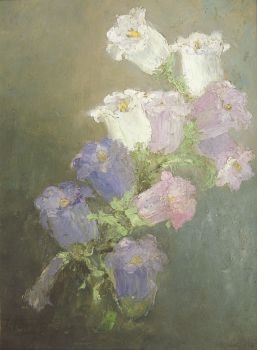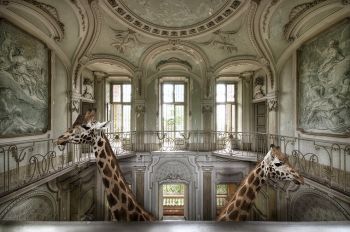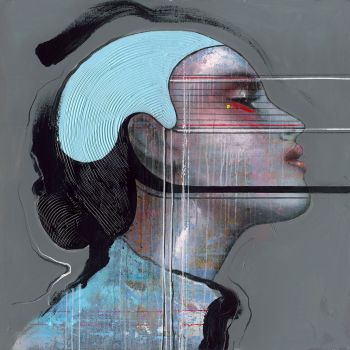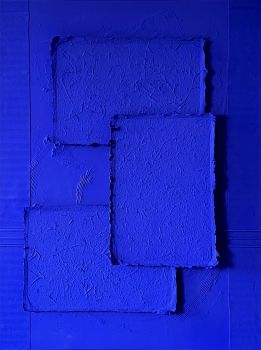Canción para un Útero Difunto 2023
Mari Ito
LijmPapierHoutJapans papierPigment
162 ⨯ 390 ⨯ 4 cm
ConditionExcellent
€ 43.560
Villa del Arte Galleries
- Over kunstwerkTitle: "Song for a Deceased Uterus"
This piece is a triptych, each panel is 162 x 130 cm, all together: 162 x 390
Mari Ito was born in Tokyo, Japan in 1980. She majored in Nihonga, Japanese-style painting made with traditional practices, techniques and materials. She moved to Barcelona (Spain) in 2006. Since then she has taken up residence here and with Nihonga as her base she has developed various 2-D and sculptural works.
With her motif centered upon her childhood experiences, loud colours and sensitive but sophisticated lines create unique works beyond traditional Japanese painting, opening up a unique image of the world. In pursuing the universal theme of the seeds of human desire, with its mix of happiness, sorrow and wrath, and in particular through the recurring image of flowers with faces, she reveals her distinctive approach, which is also filled with humor. Through her captivating creations, she beckons us to contemplate the intricate tapestry of human emotion, unearthing the seeds that shape our existence.
One cannot help but be drawn to Mari’s recurring theme: flowers with faces. This whimsical touch reveals a distinctive aspect of her artistic identity, one infused with a delightful sense of humor. It is through these charming blooms that Mari invites us to share in her unique perspective on the world. - Over kunstenaar
Mari Ito is geboren in Tokio, Japan in 1980. Ze studeerde af in Nihonga, Japan, en schilderde met traditionele praktijken, technieken en materialen. In 2006 verhuisde ze naar Barcelona (Spanje). Sindsdien heeft ze zich hier gevestigd en met Nihonga als basis heeft ze verschillende 2-D en sculpturale werken ontwikkeld.
Met haar motief gericht op haar jeugdervaringen, luide kleuren en gevoelige maar geraffineerde lijnen creëren unieke werken die verder gaan dan de traditionele Japanse schilderkunst, waardoor een uniek beeld van de wereld ontstaat.
In het nastreven van het universele thema van de zaden van het menselijk verlangen, met zijn mix van geluk, verdriet en woede, en in het bijzonder door het terugkerende beeld van bloemen met gezichten, onthult ze haar kenmerkende aanpak, die ook gevuld is met humor.
Bent u geïnteresseerd om dit kunstwerk te kopen?
Artwork details
Related artworks
Jean-François Rauzier
Cupula - Limited edition of 8 2015 - 2024
Prijs op aanvraagVilla del Arte Galleries
1 - 4 / 24- 1 - 4 / 24
Jan Sluijters
Moeder met twee kinderen in badkamer1900 - 1950
Prijs op aanvraagStudio 2000 Art Gallery
Joris August Verdonkschot
Degas Revisited - In Stock2000 - 2020
Prijs op aanvraagMorren Galleries Utrecht
1 - 4 / 24- 1 - 4 / 24
Samuel Dejong
Anatomia Blue Heritage, Atlas Beetle Open,2020
Prijs op aanvraagVilla del Arte Galleries
1 - 4 / 12

